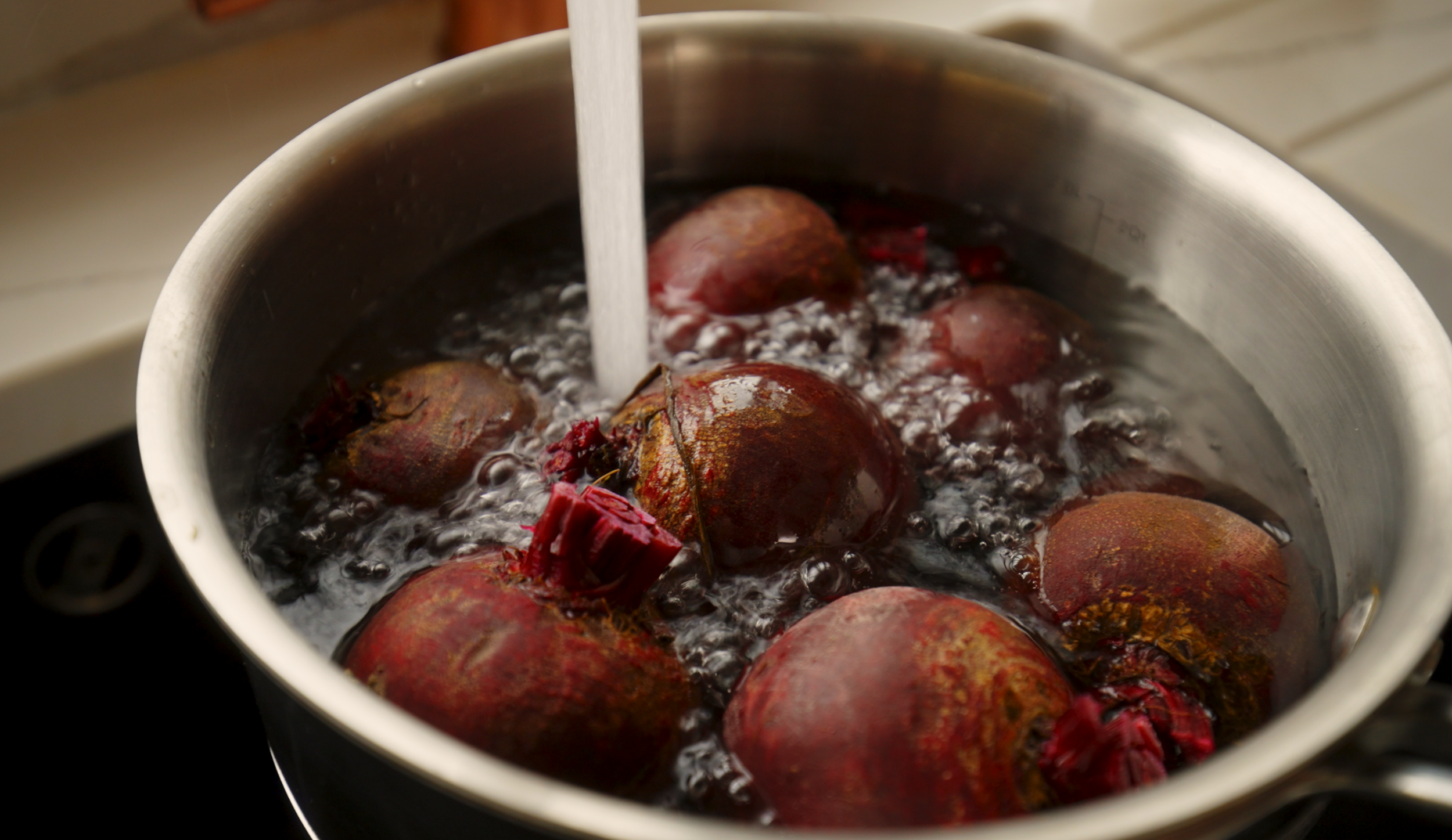Easy Pickling Liquid Recipe, Perfect for Pickled Beetroot or Cabbage
Chef Ellis Barrie shows us how to make a quick and easy pickling liquid (liquor), perfect for creating pickled cabbage and beetroots at home.
Pickled beetroot or pickled cabbage? Both are great accompaniments to a great scouse recipe, but equally they are great to have in the cupboard for everything from salads to toppings for burgers, sandwiches or wraps, and sides for roast meats.
Growing up, our Grandad would always pickled beetroots and serve them up with scouse and homemade pies, and as a side to a roast dinner, he still does! While at home, it was often pickled cabbage that featured more regularly.
Regardless of your favourite, once you have created a simple pickling liquid, you don’t have to stop with cabbage or beetroot, it is easy to experiment with preserving other bits. You can get some great flavours with pickling and it is a nice introduction to other preserving techniques. You’ll have shelves full of kilner jars before you know it!
“There’s something beautifully old-school about pickling, isn’t there? Taking humble vegetables and transforming them into tangy, sweet, and savory accompaniments that brighten up any meal feels a bit like magic.
For me, pickled beets and red cabbage are absolute staples in the kitchen and perfect for everything from sandwiches to salads and, of course, a hearty bowl of Scouse.
It all starts with a good pickling liquid.
”
Tips
Sterilise Your Jars: Always ensure jars are sterilised before use to extend the shelf life of your pickles.
Cover Completely: Make sure vegetables are fully submerged in the pickling liquid to preserve them properly.
Storage: Keep your pickles in the fridge and enjoy them for several months (if they last that long!).
-
Ingredients for Pickling Liquor
500ml white wine vinegar
300ml water
200g sugar
Aromatics (choose your favorites!):
Peppercorns
Star anise
Cloves
Whole chili (for flavor, not heat)
Fresh ginger slices
Garlic cloves
Thyme, rosemary, sage
Optional: Mustard seeds or a pinch of Dijon mustard
Cooking Instructions
Step 1: Prepare the Beets
Boil the Beets: Place whole beets in a pot of boiling water and cook until a knife easily pierces through (don’t overcook—you want them to hold their shape).
Peel While Warm: Once cooked, let the beets steam slightly, then gently rub the skins off. Pro tip: Use gloves to avoid stained hands!
Step 2: Make the Pickling Liquid
Combine the vinegar, water, sugar, and aromatics in a pot.
Bring the mixture to a gentle simmer, stirring until the sugar dissolves.
Pro Tip: Make a large batch and store the leftover pickling liquid in the fridge for future projects.
Step 3: Slice and Pack
Slice your peeled beets into thick rounds or wedges—go with your personal preference.
Pack the slices tightly into sterilised jars, leaving enough space for the pickling liquid to fully cover the vegetables.
Step 4: Pour and Seal
Pour the hot pickling liquid over the beets, ensuring they’re completely submerged.
Seal the jars tightly and let them cool.
For the best flavor, let the jars sit in the fridge for 2–3 weeks before digging in.
Bonus: Quick Pickled Red Cabbage
Got leftover pickling liquid Don’t let it go to waste, instead, use it to pickle red cabbage in minutes!
Thinly slice a head of red cabbage.
Add the cabbage to a wide pot and pour the leftover pickling liquid over it.
Cook briefly until the cabbage is tender but still crisp.
Transfer the cabbage to sterilised jars, ensuring it’s fully submerged in the liquid.
This quick pickled cabbage is perfect with stews or as a crunchy, tangy side.
So there you have it. A simple pickling liquer to set you on your road to pickling everything on site. And a couple of simple recipes to make sure atleast some of your efforts are rewarded with flavour.
Picking Liquid FAQ
-
Combine vinegar, water, sugar, and aromatics in a pot. Simmer gently, stirring until the sugar dissolves. This basic recipe works for various vegetables, including beetroots and red cabbage.
-
Combine vinegar, water, sugar, and aromatics in a pot. Simmer gently, stirring until the sugar dissolves. Use this liquid to cover prepared vegetables in sterilised jars, ensuring they are fully submerged.
-
Boil beets until tender, peel while warm, slice into rounds or wedges, pack into sterilised jars, and pour hot pickling liquid over them. Seal tightly and let cool before storing in the fridge.
-
Yes, leftover pickling liquid can be reused for other vegetables. For example, use it to quickly pickle red cabbage by thinly slicing it, adding to a pot, and pouring the leftover pickling liquid over it. Cook briefly until tender but still crisp, then transfer to sterilised jars.
-
Sterilise jars before use, ensure vegetables are fully submerged in pickling liquid, and store jars in the fridge. Properly prepared pickles can last several months if stored correctly.





